Sep 21, 2023 Breakfast blues! I am sure I am not the only one who faces it. On most working days, my breakfast is a simple avocado toast or my favorite banana oatmeal. They are quick, easy and filling. Two of my other favorite breakfasts that I make often (and they are both Indian breakfast recipes) are Poha and Upma. They are both filling, hearty and delicious.
What is Upma?
Upma is a traditional Indian breakfast made with sooji (also called rava in the south). It’s more common in South India but now I see it just as much everywhere in India. The most common type of upma is made with rava (also known as sooji), but there are other varieties of upma too like semiya upma, bread upma, oats upma and more. My mom always said, upma is the savory version of sooji halwa, which is true in a way. They are both made with sooji and water. The difference is one has sugar and the other has veggies and salt. Rava Upma is often served with coconut chutney and filter coffee. I mostly eat it as much but of course the addition of chutney (& filter coffee!) makes it even more appetizing. I grew up eating upma for my breakfast. It was made at least once a week in my home and we used to eat it with ketchup! Now, I prefer it with coconut chutney. Anyway though I grew up eating it, I was never a huge fan. Of course I ate it happily but it was not something I would crave for. But now, I really like it. In fact now, it’s one of my favorite things to make for breakfast.
Ingredients
Sooji/Rava: to make upma, we use semolina which is also known as sooji/suji or rava. There are 2 types of sooji available in the market- the coarse variety and the fine variety (which I used in making Raj Kachori). For making upma, we typically use the coarse variety. Seasonings: upma is seasoned with whole spices like mustard seeds, lentils like chana dal and urad dal and also with fresh ginger and curry leaves. Cashews: this is optional but I like adding cashews to my upma for some crunch.
Getting the Water to Sooji Ratio Right For Upma
Making upma is easy but I did struggle with getting the texture right for a while. Most of the time my upma turned out super dry. Basically it just never seemed like the one I would eat at South Indian restaurants and cafes. After a lot of attempts, I realized that it all lies in using the right sooji to water ratio. From what I learnt, almost everyone told me to use a 1:2 ratio for sooji to water. However it never worked for me. I wanted my upma to be soft and melt-in-mouth kind and for that this ratio didn’t work. What worked was a ratio of 1:3. So for every 1 cup of sooji, I add 3 cups of water and it works perfectly well.
How To Make Rava Upma
1- Roast 1 cup sooji/rava on medium heat until fragrant, around 5 to 6 minutes, stirring continuously. Sooji shouldn’t turn brown from the bottom so be careful. Remove sooji from the pan and transfer it to another bowl. You can do this step of roasting sooji in advance and save time for busy mornings. 2- To the same pan now add 1& 1/2 tablespoons oil on medium heat. Add 1 teaspoon mustard seeds and let them pop. 3-Then add the following:
pinch of hing 7 to 8 cashew nuts (raw), 1 teaspoon chana dal ((soaked in water for 10 mins before) 1 teaspoon urad dal (soaked in water for 10 mins before) 1 teaspoon finely chopped ginger
Sauté for 1 minute until they start changing color. 4- Add 1 small red onion (finely chopped), 1 chopped green chili and around 12 curry leaves. Cook for 2 minutes until the onions are soft. 5- Then add 3 tablespoons of green peas and stir (I used frozen peas and soaked them in warm water for 10 mins before adding them to the pan). Cook for 2 minutes until the raw smell of peas goes away. 6- Add 3 cups (24 oz) of water. 7- Then add 3/4 teaspoon salt (or to taste) to the water. 8- Also add 1 tablespoon chopped cilantro. 9- Add 1 teaspoon lemon juice and mix it well. You may also add sugar if you like a little sweet taste in your upma. You may add 1/2 teaspoon sugar. I did not add any. 10- Now let the water come to a boil. 11- Once the water comes to a boil, start adding the roasted sooji a little at a time. 12- Mix sooji after each addition in one direction with a wooden spatula. 13- Add all the sooji in a similar way, little by little until all of it is absorbed by water. 14- Then cover the pan with a lid and set the heat to low. Let it remain like that for 2 mins. 15- Remove the lid and add 1 teaspoon of ghee. This is optional but recommended. Turn off the heat. 16- Mix the ghee and close the lid again for a few seconds. Remove the lid, fluff upma with a fork. Serve upma warm with a side of peanut chutney or cilantro coconut chutney!
Make Ahead Options For Upma
Upma tastes best when freshly made and so I highly recommend making it and eating it fresh. However, there are few things which you can do to make it easier for you to make upma when you want it and the most important thing is to roast your sooji beforehand and keep it ready. Having pre-roasted sooji saves 5 to 6 minutes of time on busy mornings. Leftover upma can be reheated in a microwave or in a pan. You might need to sprinkle a little water when reheating in a pan. I also use a potato masher when reheating in a pan to bring everything together as upma usually clumps up as it cools.
Different Upma Recipes
If you want to try some different Upma recipes which aren’t as traditional, try Quinoa Upma where sooji is replaced with quinoa making it more protein packed and also gluten-free. There’s also Bread Upma which is an easy and quick version made with bread. It’s a great way to use leftover bread.
Use 3 cups of water for 1 cup of sooji: this results in a soft consistency like you get in restaurants. I have tried 2 and 2 & 1/2 cups, but I think 3 cups works best. Use ghee and oil more freely for this upma recipe: I have used 1& 1/2 tablespoons oil, you may use even more for a softer and tastier upma. I also add a teaspoon of ghee in end to enhance the flavors. It is optional but I recommend adding a little ghee for extra flavor. Add more veggies for more flavor in your upma: I added only peas, You can add peppers, carrots. My mother-in-law also adds cauliflower (cut into very small pieces) and it tastes good. Don’t add all the sooji in one go: Add 1 to 2 tablespoons at a time, stirring after each addition. This way the upma will not form any lumps. Don’t forget the lemon juice: a squeeze of fresh lemon juice really helps in bringing out the flavors so don’t skip on that. And finally, serve the upma straight away when warm. It tastes best when fresh. The final texture of upma also depends on the type of sooji that you use for the upma. So if you are not happy with the texture even after following all these steps, try going for a different brand of sooji.
This post has been updated from the recipe archives, first published in January 2019.
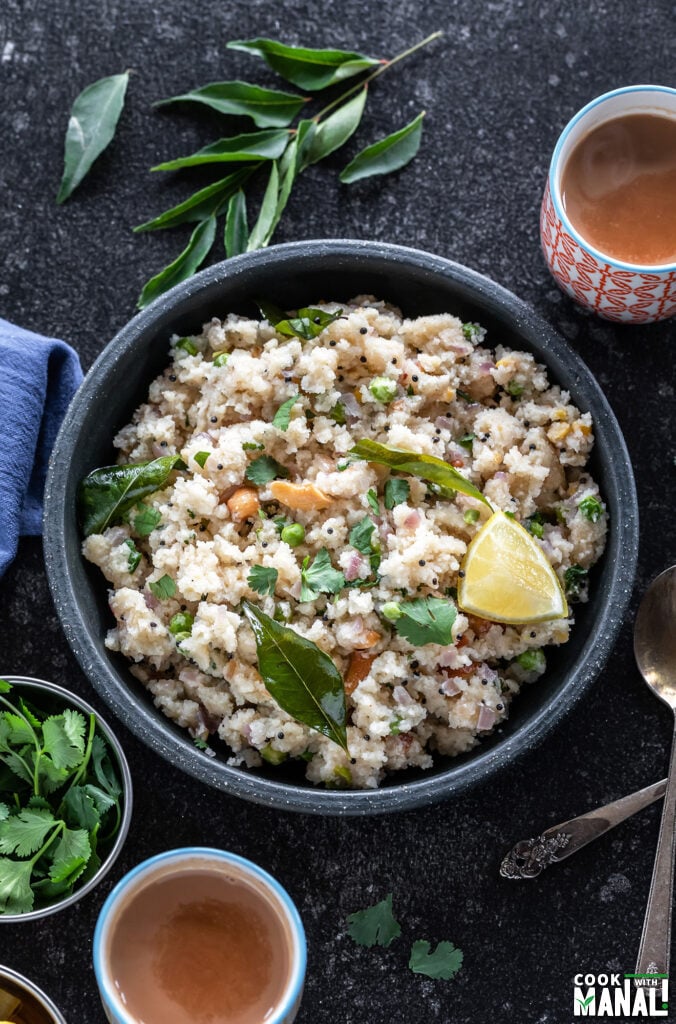
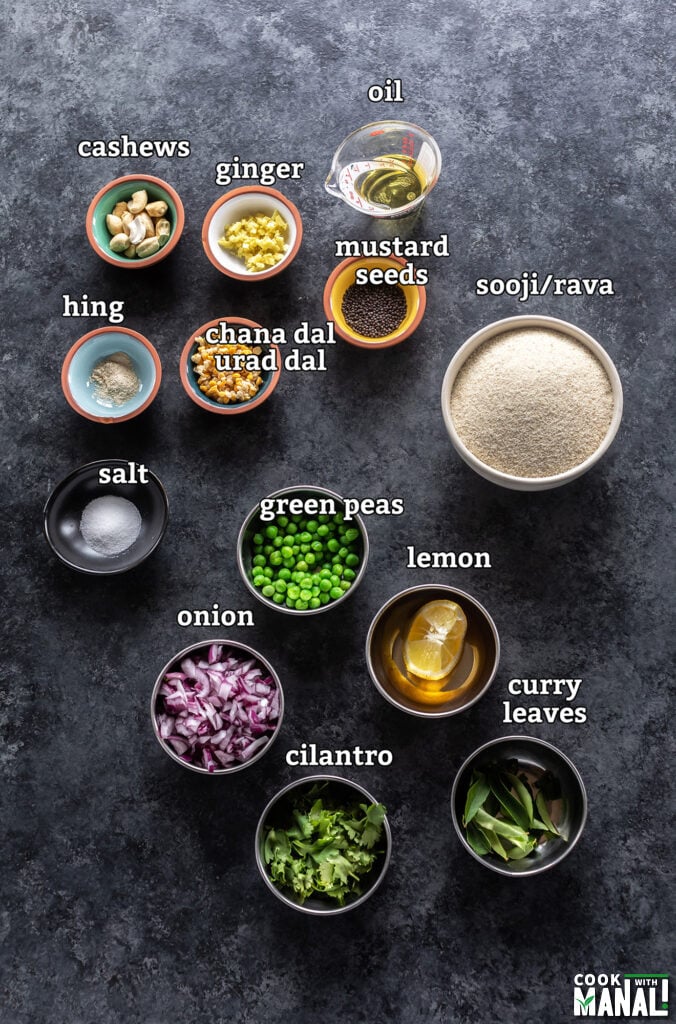



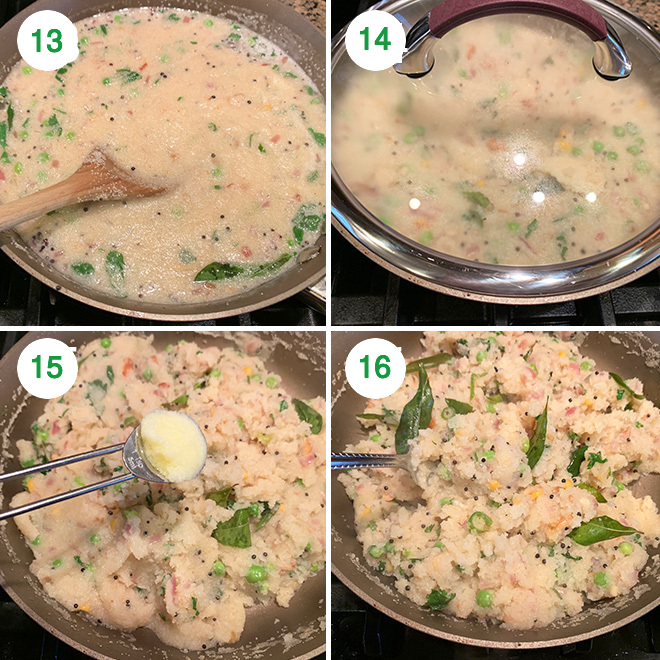
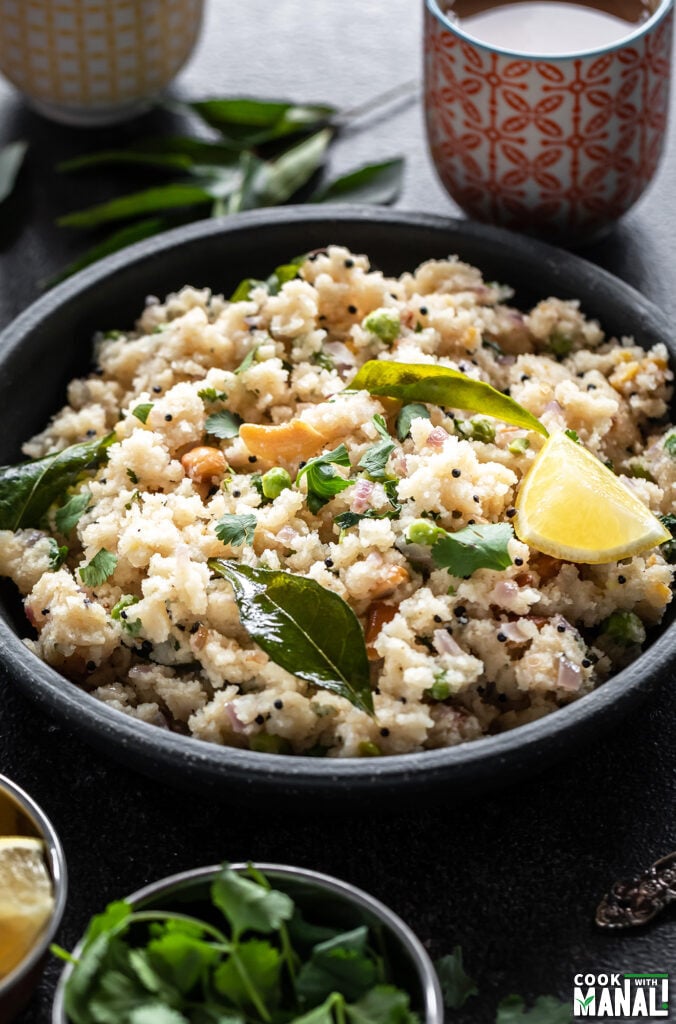
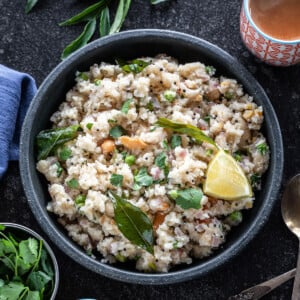
title: “Upma Recipe How To Make Rava Upma " ShowToc: true date: “2024-09-16” author: “Cheryl Perry”
Sep 21, 2023 Breakfast blues! I am sure I am not the only one who faces it. On most working days, my breakfast is a simple avocado toast or my favorite banana oatmeal. They are quick, easy and filling. Two of my other favorite breakfasts that I make often (and they are both Indian breakfast recipes) are Poha and Upma. They are both filling, hearty and delicious.
What is Upma?
Upma is a traditional Indian breakfast made with sooji (also called rava in the south). It’s more common in South India but now I see it just as much everywhere in India. The most common type of upma is made with rava (also known as sooji), but there are other varieties of upma too like semiya upma, bread upma, oats upma and more. My mom always said, upma is the savory version of sooji halwa, which is true in a way. They are both made with sooji and water. The difference is one has sugar and the other has veggies and salt. Rava Upma is often served with coconut chutney and filter coffee. I mostly eat it as much but of course the addition of chutney (& filter coffee!) makes it even more appetizing. I grew up eating upma for my breakfast. It was made at least once a week in my home and we used to eat it with ketchup! Now, I prefer it with coconut chutney. Anyway though I grew up eating it, I was never a huge fan. Of course I ate it happily but it was not something I would crave for. But now, I really like it. In fact now, it’s one of my favorite things to make for breakfast.
Ingredients
Sooji/Rava: to make upma, we use semolina which is also known as sooji/suji or rava. There are 2 types of sooji available in the market- the coarse variety and the fine variety (which I used in making Raj Kachori). For making upma, we typically use the coarse variety. Seasonings: upma is seasoned with whole spices like mustard seeds, lentils like chana dal and urad dal and also with fresh ginger and curry leaves. Cashews: this is optional but I like adding cashews to my upma for some crunch.
Getting the Water to Sooji Ratio Right For Upma
Making upma is easy but I did struggle with getting the texture right for a while. Most of the time my upma turned out super dry. Basically it just never seemed like the one I would eat at South Indian restaurants and cafes. After a lot of attempts, I realized that it all lies in using the right sooji to water ratio. From what I learnt, almost everyone told me to use a 1:2 ratio for sooji to water. However it never worked for me. I wanted my upma to be soft and melt-in-mouth kind and for that this ratio didn’t work. What worked was a ratio of 1:3. So for every 1 cup of sooji, I add 3 cups of water and it works perfectly well.
How To Make Rava Upma
1- Roast 1 cup sooji/rava on medium heat until fragrant, around 5 to 6 minutes, stirring continuously. Sooji shouldn’t turn brown from the bottom so be careful. Remove sooji from the pan and transfer it to another bowl. You can do this step of roasting sooji in advance and save time for busy mornings. 2- To the same pan now add 1& 1/2 tablespoons oil on medium heat. Add 1 teaspoon mustard seeds and let them pop. 3-Then add the following:
pinch of hing 7 to 8 cashew nuts (raw), 1 teaspoon chana dal ((soaked in water for 10 mins before) 1 teaspoon urad dal (soaked in water for 10 mins before) 1 teaspoon finely chopped ginger
Sauté for 1 minute until they start changing color. 4- Add 1 small red onion (finely chopped), 1 chopped green chili and around 12 curry leaves. Cook for 2 minutes until the onions are soft. 5- Then add 3 tablespoons of green peas and stir (I used frozen peas and soaked them in warm water for 10 mins before adding them to the pan). Cook for 2 minutes until the raw smell of peas goes away. 6- Add 3 cups (24 oz) of water. 7- Then add 3/4 teaspoon salt (or to taste) to the water. 8- Also add 1 tablespoon chopped cilantro. 9- Add 1 teaspoon lemon juice and mix it well. You may also add sugar if you like a little sweet taste in your upma. You may add 1/2 teaspoon sugar. I did not add any. 10- Now let the water come to a boil. 11- Once the water comes to a boil, start adding the roasted sooji a little at a time. 12- Mix sooji after each addition in one direction with a wooden spatula. 13- Add all the sooji in a similar way, little by little until all of it is absorbed by water. 14- Then cover the pan with a lid and set the heat to low. Let it remain like that for 2 mins. 15- Remove the lid and add 1 teaspoon of ghee. This is optional but recommended. Turn off the heat. 16- Mix the ghee and close the lid again for a few seconds. Remove the lid, fluff upma with a fork. Serve upma warm with a side of peanut chutney or cilantro coconut chutney!
Make Ahead Options For Upma
Upma tastes best when freshly made and so I highly recommend making it and eating it fresh. However, there are few things which you can do to make it easier for you to make upma when you want it and the most important thing is to roast your sooji beforehand and keep it ready. Having pre-roasted sooji saves 5 to 6 minutes of time on busy mornings. Leftover upma can be reheated in a microwave or in a pan. You might need to sprinkle a little water when reheating in a pan. I also use a potato masher when reheating in a pan to bring everything together as upma usually clumps up as it cools.
Different Upma Recipes
If you want to try some different Upma recipes which aren’t as traditional, try Quinoa Upma where sooji is replaced with quinoa making it more protein packed and also gluten-free. There’s also Bread Upma which is an easy and quick version made with bread. It’s a great way to use leftover bread.
Use 3 cups of water for 1 cup of sooji: this results in a soft consistency like you get in restaurants. I have tried 2 and 2 & 1/2 cups, but I think 3 cups works best. Use ghee and oil more freely for this upma recipe: I have used 1& 1/2 tablespoons oil, you may use even more for a softer and tastier upma. I also add a teaspoon of ghee in end to enhance the flavors. It is optional but I recommend adding a little ghee for extra flavor. Add more veggies for more flavor in your upma: I added only peas, You can add peppers, carrots. My mother-in-law also adds cauliflower (cut into very small pieces) and it tastes good. Don’t add all the sooji in one go: Add 1 to 2 tablespoons at a time, stirring after each addition. This way the upma will not form any lumps. Don’t forget the lemon juice: a squeeze of fresh lemon juice really helps in bringing out the flavors so don’t skip on that. And finally, serve the upma straight away when warm. It tastes best when fresh. The final texture of upma also depends on the type of sooji that you use for the upma. So if you are not happy with the texture even after following all these steps, try going for a different brand of sooji.
This post has been updated from the recipe archives, first published in January 2019.







